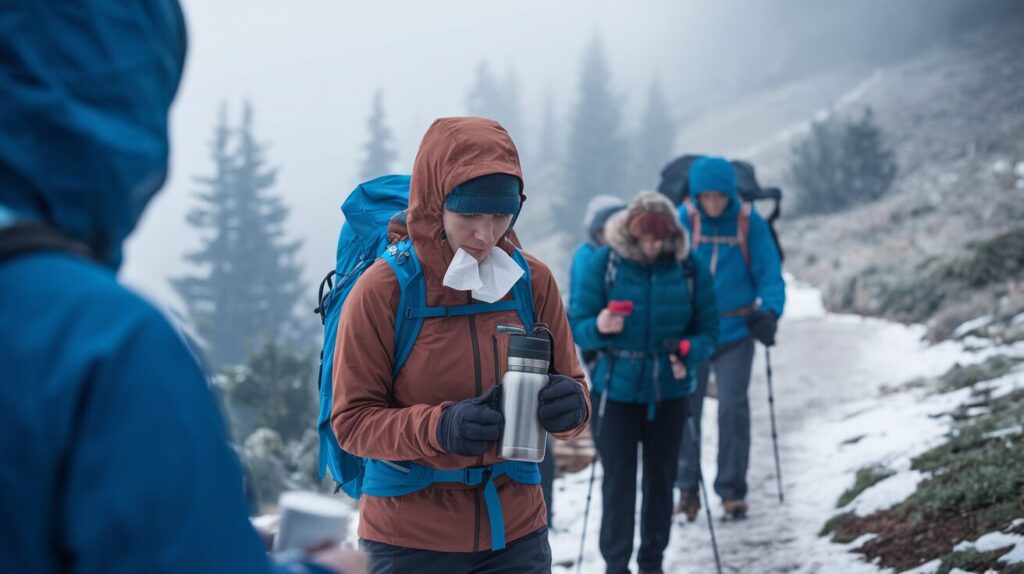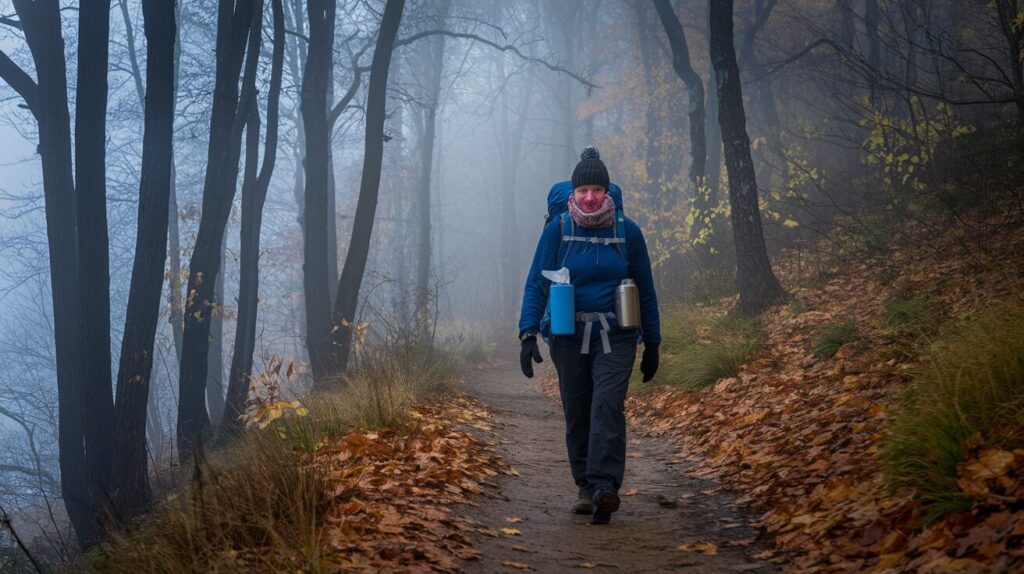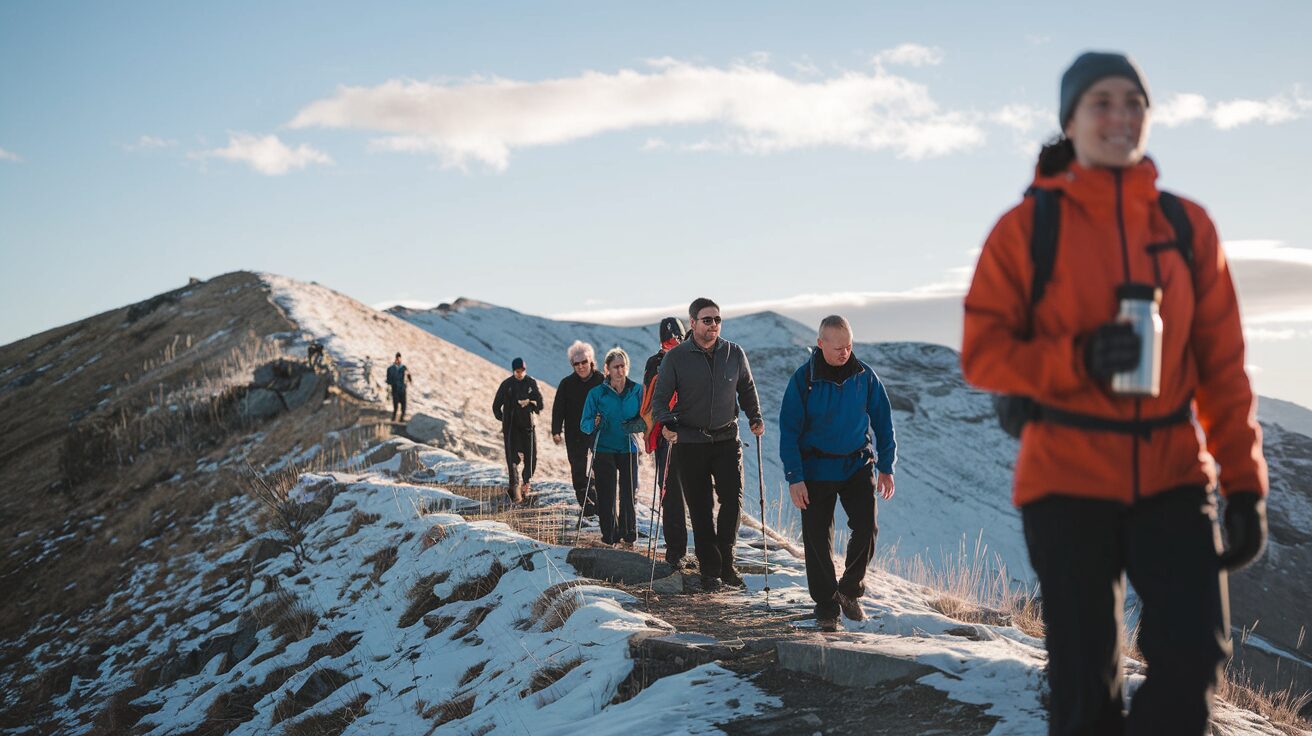Wondering if you can still hit the trails when you’re feeling under the weather? You’re in the right place. Facing a cold just before a hike can be a real bummer especially if you’re someone who loves being out on the trails all year, even in the chilly months.
Here, we’ll look at what to consider, the potential risks, and even some surprising benefits of hiking with a cold. Plus, I’ll share some practical tips to help you decide if it’s best to lace up those boots or stay indoors. Let’s dive in and make sure you’re set to enjoy the trail safely, even when you’re not at 100%.
Can You Still Go Hiking With a Cold?
If you’re questioning whether it’s safe to go hiking with a cold, the answer is yes under certain conditions. Hiking can be invigorating, but being mindful of your health is essential. Hiking with a mild cold can be safe and even beneficial for your well-being if symptoms are “above the neck,” like a runny nose or slight congestion.

However, if symptoms are more severe or “below the neck,” such as a chest cough, fever, or body aches, it’s best to prioritize rest and avoid strenuous activities.
The Mayo Clinic advises that minor cold symptoms such as a mild headache, sore throat, and congestion are generally safe to hike with. However, consider these key factors to determine if you should avoid hiking with a cold:
When to Avoid Hiking with a Cold
- You Feel Excessively Tired: Even a short hike could worsen symptoms if your body feels drained.
- Your Symptoms Are Below the Neck: Chest congestion, body aches, or nausea are signs of rest.
- You Have a Fever: Fever suggests infection, which can intensify with physical activity.
- You Feel Dizzy or Lightheaded: Balance is key on the trail; dizziness could lead to injury.
- Your Cough Is Intense or Uncomfortable: Persistent coughing can make hiking uncomfortable and disruptive.
- If Your Body Is Signaling “No”: Listen to your body’s cues, especially if symptoms worsen.
Is Hiking with a Cold Beneficial?

Hiking with a cold isn’t generally harmful unless you exert yourself excessively. Light physical activity in fresh air can support your recovery and improve your mood. If symptoms are above the neck, mild exercise like hiking could relieve nasal congestion and boost circulation, potentially aiding your immune response.
Benefits of Hiking While Sick
- Exercise Boosts Energy: Light exercise can rejuvenate and elevate your mood.
- Fresh Air Benefits: Spending time in fresh air often alleviates congestion and headaches.
- Distraction from Symptoms: Hiking may shift focus away from feeling unwell and improve mental clarity.
Risks of Hiking With a Cold
While hiking with minor cold symptoms can be safe, it’s not without risks. Exposure to different weather conditions and physical strain can worsen symptoms.
Potential Risks of Hiking With a Cold
- Worsening Symptoms: Physical exertion and varying weather conditions can intensify cold symptoms.
- Feeling Uncomfortable Midway: Some hikers may feel fine initially but experience a sudden resurgence of symptoms while on the trail.
- Spreading Germs to Others: Busy trails make it easy for germs to spread. Opt for less crowded paths if you do decide to hike.
Key Tips for Hiking With a Cold
If you decide to go hiking with a cold, certain precautions can make your hike safe and more enjoyable.
1. Know Your Hiking Limits
Understanding your body’s signals is essential. Symptoms like dizziness or lightheadedness mean you should reconsider hiking. Avoid pushing yourself, especially if you’re unused to exercising while unwell.
2. Assess Yourself Frequently
Check in with yourself before and during the hike. If you feel worsening symptoms like nausea or chest discomfort, it’s a sign to turn around. Above all, prioritize your health.
3. Stick to Smaller Hikes
When dealing with a cold, avoid lengthy or challenging hikes. A shorter, flat trail can be safer and allow you to turn back easily if needed. Avoiding strenuous hikes lets you experience the outdoors without risking further illness.
4. Avoid High Elevation Changes
Pressure from high elevation changes can exacerbate sinus congestion, worsening headaches, or dizziness. Choose lower-elevation trails that minimize changes in altitude.
5. Stay Aware of Your Symptoms
Monitor your symptoms closely. If they worsen, listen to your body and cut the hike short. For many hikers, symptoms like a runny nose or sore throat may be manageable at first, but knowing when to head back is crucial.
6. Stay Hydrated and Energized
Hydration is key to recovery and will help maintain your energy on the trail. Bring a sufficient amount of water and pack high-energy snacks like fruits, nuts, and protein bars to sustain you through the hike.
7. Keep Warm with Layers
Wear warm, breathable clothing layers, especially if hiking in cool weather. Staying warm will support your recovery and prevent further illness.
8. Take Frequent Breaks
Frequent breaks can prevent overexertion and give your body a chance to rest. Short, gentle pauses can make a big difference in maintaining your energy levels.
9. Avoid Crowded Trails
To minimize the risk of spreading germs, opt for less populated trails. Being around fewer people can make the experience safer for both you and others.
Winter Hiking for Beginners Tips for Cold Weather & Snow
People like hiking in Winter, it is a beautiful experience, but it requires some preparation because,
The temperature has dropped outside, so without preparing for it will be dangerous.
Prepare for Winter Hiking Beginners, there are different types of tips to help you with Cold Weather & Snow weather if you are a beginner in hiking no matter if you also like these tips.
- Check the weather forecast.
- Start with shorter hikes.
- Layer your clothing.
- Must Avoid cotton.
- Wear a hat and gloves.
- Protect your face.
- Use sunscreen.
- Use proper footwear.
- Use gaiters.
- Use trekking poles.
- Don’t start Late Start early.
- Plan for shorter daylight hours.
- Pack high-energy snacks.
- Hydrate properly.
- Insulate your water supply.
- Learn to read the snow.
- Take shorter steps.
- Be cautious on icy surfaces.
- Bring a map and compass.
- Pack essential safety gear.
- Tell someone your plans.
- Hike with a partner.
- Learn basic winter survival skills.
- Stay on marked trails.
- Be aware of avalanches.
- Bring spare batteries.
- Pack Hand warmers.
- Practice Leave No Trace principles.
- Learn from experienced hikers.
Conclusion Hiking With a Cold
Hiking with a cold can be an invigorating experience if approached with caution. Ensuring your symptoms are mild and managing your pace can allow you to enjoy the benefits of fresh air without compromising recovery. Knowing your limits, assessing your symptoms, and staying hydrated is vital for a successful and safe hike.
If this Blog Post Helps you share with your friends follow us for more hiking Guide and Tips also on social media to get updates Thank you for visiting – myhikingguide.com
FAQs About Hiking With a Cold
Should I Hike if I Have a Cough?
A mild, dry cough may be fine, but a severe or persistent cough is a sign of rest.
Can I Go for a Walk in the Cold if I Have a Cold?
Yes, but stay bundled up to stay warm. Fresh air is beneficial, even with a mild cold.
Can I Hike With a Sore Throat?
Yes, mild sore throat symptoms, as long as they’re above the neck, are typically safe. However, pay attention if soreness increases during the hike.
Can I Climb a Mountain With a Cold?
Mountain hiking can strain your body and worsen cold symptoms, so saving this for when you’re fully healthy is best. Also, you can check out the post Should I Climb if I’m Sick ? by agirlwhoclimbs.com
How Much Water Should I Drink While Hiking With a Cold?
It’s recommended to drink about half a liter of water per hour to stay hydrated. Adjust this depending on the weather and your exertion level.

